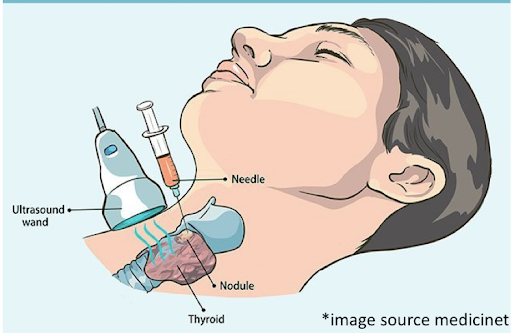
LYMPH NODE BIOPSY
Lymph nodes are present all through the body forming main checkpoints in the drainage pathway of lymphatic fluid in the body and as reservoirs of immune cells called lymphocytes. Lymph nodes have an important role in immunity and fluid regulation. They play an important role as first responders within the body in states of infection, disease and cancer. So lymph node enlargement beyond acceptable limits is an important marker for disease diagnosis used by doctors. Doctors diagnose nodal enlargement by feeling for them in important areas like the neck, axilla and groin etc. Other lymph nodal enlargements within the chest or abdominal cavity are picked up on Ultrasound or CT scans commonly.
Many times for accurate diagnosis and further testing to confirm the existence of cancer or infection etc , a sample from these lymph nodes is required called a biopsy. These samples are later submitted for pathological tests and microbiology tests in lab containers.
Traditionally patients underwent complete excision of these lymph nodes by a surgeon in an operating room under anesthesia which would involve surgical risks like bleeding, infection and anesthesia risks etc.
The huge advancements in imaging have now made these so called “EXCISION BIOPSIES” almost obsolete. Interventional radiologists are able to acquire good core like samples using biopsy needle from the neck, axilla, chest, abdomen and almost all regions of the body under simple local anesthesia in much lesser time. These are mostly done as outpatient procedures by interventional radiologists and completed in less than an hour. The samples thus obtained yield the diagnosis when examined by pathological and immunohistochemistry tests. Thus “IMAGE GUIDED BIOPSIES” are “MORE COMFORTABLE, LESS RISKY,NO SCAR,COST LESS THAN 10 PERCENT OF EXPENSE OF EXCISION BIOPSY”. The chance of image guided biopsy being nondiagnostic is very less. In fact the chance of accurate sampling is higher as the interventional radiologist actually targets the diseased nodes in imaging while a surgeon performing the biopsy may not exactly get the involved node while operating.
The hurdle is the patient is many times unaware that a biopsy can be performed in a simple fashion at a much lesser cost on an out patient basis. So, it makes sense to consult an interventional radiologist to see if the biopsy can be done in this cheaper, safer “no scar,no scalpel” approach .
Leave a reply
Leave a reply